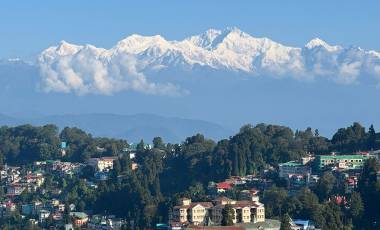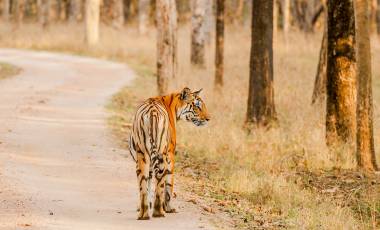Read time – 3 minutes
2014 proved to be a fruitful year at Bandhavgarh National Park, home to the magnificent Bengal tiger. Our projects here focus on protecting the tiger population in the park and improving the lives of the people who call this place home.
Saving the Bengal Tiger
In April, Exodus stalwart Paul Goldstein once again donned the tiger suit to run the Brighton Marathon, hike to London and immediately run the London Marathon the following Sunday, all to raise money for the project. The total for his five-year ‘Worth More Alive’ fundraising campaign so far has topped an amazing £100k.
Although he is not running this year as he is recovering from surgery, he maintains that ‘ until the Bengal tiger is off the endangered list, he has no intention of either hanging up his suit, shoes, or perhaps even trunks…’ As ever he is touched and invigorated by the extraordinarily generous and passionate support he has received.
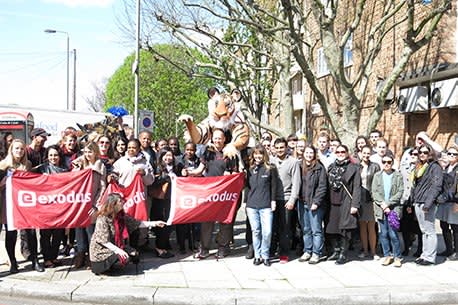 Paul visits Team Exodus en route to the London Marathon 2014
Paul visits Team Exodus en route to the London Marathon 2014Curious to see where all that money has gone? Read on for more… Community Hall, Tala Village February 2014 saw Paul lead another full group in February on his annual Tigers & Cricket trip to Bandhavgarh. They were able to see work start on a community hall at the school in Tala – now complete.
 Paul Goldstein playing cricket
Paul Goldstein playing cricketThe Corbett Foundation
In late summer 2014, we teamed up with The Corbett Foundation, an Indian not for profit charitable trust dedicated to conservation-oriented research. They have proved instrumental in enabling us to get funds to where they are needed.
Although their work originally focussed on Corbett National Park, they also operate in Kutch, Kanha and Kaziranga as well as Bandhavgarh. They aim to provide sustainable livelihoods for local people, and they also run rural medical outreach programmes.
At our request, one of the first things The Corbett Foundation undertook was to appoint two teachers to provide English classes at the Senior School and Middle School in Tala village. Their wages will be paid from our funds for the next eighteen months.
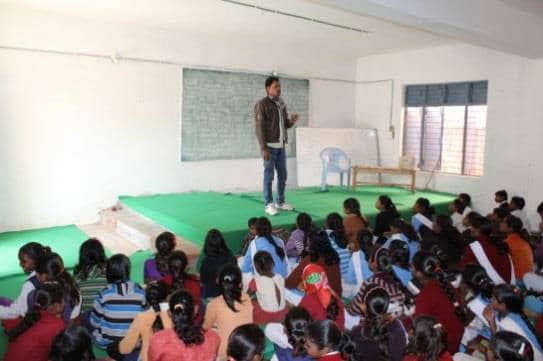 Mr Yadav teaching
Mr Yadav teaching
 Mr Singh teaching
Mr Singh teaching
Smart Stoves, Bio Gas Plant and Chain Linked Fencing
The Corbett Foundation’s team in Bandhavgarh then held community meetings to determine the needs and requirements of the villagers. This has resulted in the installation of 185 smart stoves in the villages of Rakhi and Bijhriya.
A further 215 stoves will be installed over the next 2 months. These smart stoves are modified versions of the traditional chulah. The modifications allow complete combustion of the wood used, thus reducing the smoke emitted and amount of firewood used.
10 biogas plants have also been constructed in four villages. These are ‘fuelled’ by cattle dung, offering an alternative for cooking which uses less firewood, and provides a nutrient-rich fertiliser which can improve crop growth.
In addition, 200 wells have been enclosed with chain link fences in ten villages. This keeps the water from becoming polluted from animals which could otherwise unfortunately fall into the wells.
Medical Outreach Programme
In February 2015 our funds purchased a brand new 4×4 vehicle which will be used by The Corbett Foundation as part of their medial outreach programme.
TCF’s mobile medical unit, headed by a qualified doctor and pharmacist, visits some 40 villages in and around Bandhavgarh National Park once a week and offers primary health care treatment to the villagers. On average, TCF treats around 7500 patients annually in Bandhavgarh.
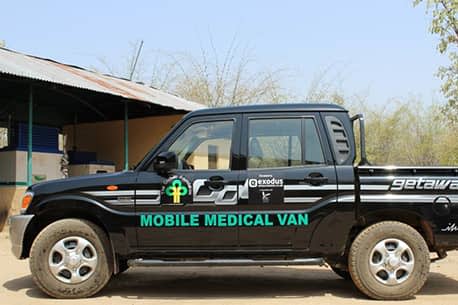 Medical Outreach Van
Medical Outreach VanSolar Pumps
Finally, work has just been completed on the installation of 10 solar pumps in and around the National Park. Their installation will ensure an adequate water supply for wildlife and patrolling staff during the dry season.
These sites were selected in agreement with all the relevant Forest & Park Department authorities and lie within the Kaluwah range of Bandhavgarh National Park and Pataur range of Panpatha Wildlife Sanctuary (Protected Areas forming Bandhavgarh National Park).
 Map of Bandhavgarh
Map of Bandhavgarh
Future Plans
As many of you will know, one of the key issues we wanted to tackle was the provision of a cattle compensation scheme. At Bandhavgarh on average there are 350 reported cases of cattle predation in the buffer zone annually. However, recent government compensation schemes that were introduced mean that farmers are now compensated for their losses by the forest department.
The compensation amount may differ on a case-to-case basis, but on an average Rs.10,000/- is paid per animal by the forest department. The Corbett Foundation believes the issue isn’t really solved by only giving out cash. In most cases the villager, who is compensated, ends up buying another low-quality breed of cattle that does not give him maximum output in terms of milk (in case of a cow) and farm work (in case of a bullock).
Corbett believes that if those who have been impacted are provided with a better breed of cow/bullock/bull in addition to the government’s cash compensation, this would provide greater help for the local community. There are many advantages to this scheme, which we are proposing to support.
Those who opt for this alternative would have to give an undertaking to stall-feed the animal and not allow it to graze in the forest where it is at risk of wild animal attack. The scheme could therefore readily involve people who have been provided with biogas plants and keep their cattle close-by.
Finally, thank you!
We hope you have found this update of interest. Much progress has been made and local people are seeing many benefits as a result. We are very grateful to everyone who so generously supports our efforts to protect the tigers at Bandhavgarh and like us, believe that they are truly ‘Worth More Alive’.
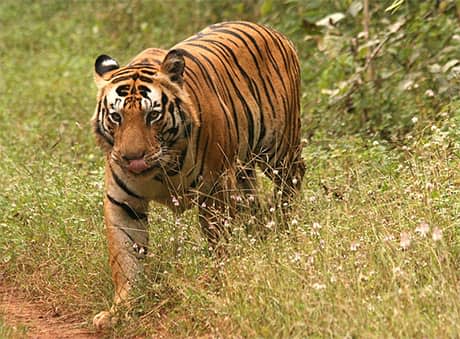 Tiger in Bandhavgarh
Tiger in BandhavgarhBrowse our trips to India below and experience the incredible work for yourself.



